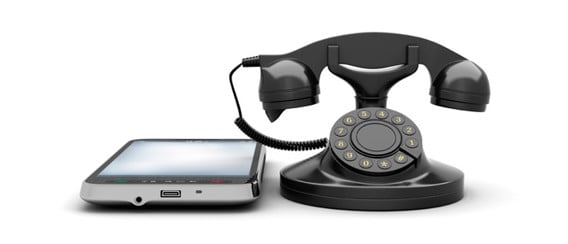Voice-over-IP: The Plain Old Telephone Service Moves into the 21st Century
Ever since Alexander Graham Bell made that famous first call in 1876, the technology of telephone subscriber services has remained remarkably unchanged. Yes, of course, central offices and carrier networks have evolved greatly, but many of us still receive service through that same old set of wires coming into our homes. Even the phones themselves would be recognizable to our forefathers.
However, great change is coming down the line, with a new method of providing voice service known as voice-over-IP (VoIP). It’s no secret that in recent years carriers have been migrating their backbone networks to IP‑based architectures, which are perfectly suited to carrying all the bits for data and video services. However, dedicated switches have remained in the central office to intercept voice traffic from customers’ phones over the copper pair. The last piece in the puzzle is to convert the so-called “last mile” to all-digital transmission, and carry the voice service over an IP service—as is already the case for data.
With many subscribers already using DSL for their data or video access, it just makes economic sense for Telcos to converge all services onto IP. In fact, some large carriers are already making plans to completely phase out their plain old telephone service (POTS) within the next few years.
So, what does this mean for the technicians installing and supporting these services in the field? They have been using their traditional phone “butt sets” for many years, but will now need a new instrument capable of testing the new VoIP service. If they do already have a DSL tester capable of testing data and IPTV service, they will also need a test set that can support the full “triple-play” range of services.
Deploying high quality IP services over DSL requires more than just a reliable copper loop. As such, it is imperative for technicians to be able to measure and verify the quality of experience (QoE) of each service the customer is buying. For data, this means measurements such as downstream and upstream throughputs, and for IPTV, this means items like “zap time” and packet-loss rates.
VoIP is no different. In order to provide a proper assessment of voice quality, Telecom technicians who install and maintain this new service on DSL lines will need to rely on test equipment that can make and receive VoIP calls. In addition, they should perform the critical quality of service (QoS) measurements, including MOS, R-factor, jitter and latency. And, to prevent technicians from having to carry multiple test sets, the ideal equipment should be capable of performing copper qualification up to wideband frequencies and DSL sync, performance testing, and supporting triple-play IP measurements—all within a single unit.




